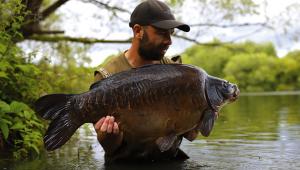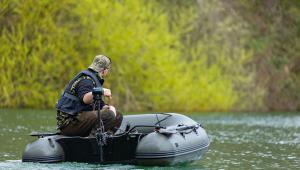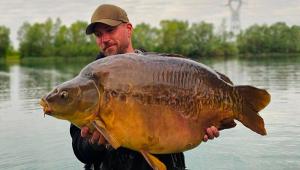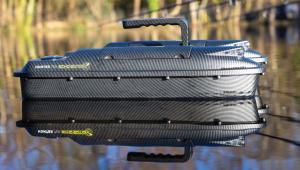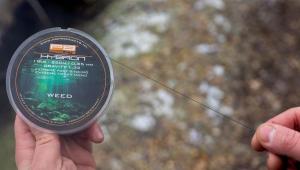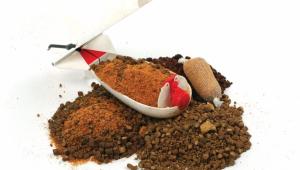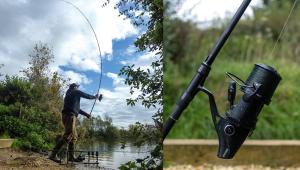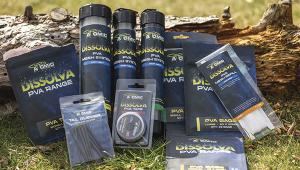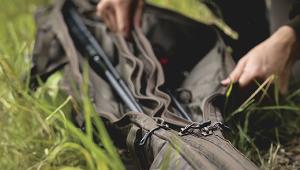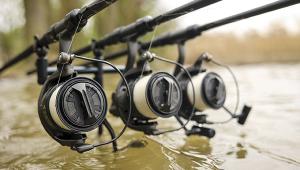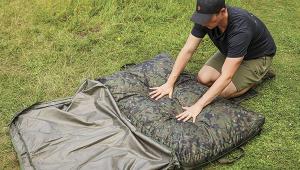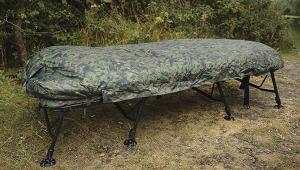Quick-Hit Carping

Between the start of spring and the height of summer, it is very easy to get carried away with the amount of bait you put in or how you fish.
You see a few fish on the top and think that they are obviously up for it, when quite often they aren’t. This is because the deeper water is probably still quite cold, so they aren’t really going down to feed hard just yet.
Also, if you are like me, with a full-time job, family commitments and suchlike, you rarely get a chance to fish for days at a time. Your fishing tends to be based around quick hits – days only or 24-hour sessions. This means that you need to think a little bit cleverer, looking for edges that will stack the odds in your favour.
For example, in the late afternoon there could be a load of carp in one corner where the sun has been hitting it all day. If you only have a few hours to catch, before either they move out or you have to pull off the water, fishing over a big bed of bait is rarely the thing to do.
I tend to fish for a bite at a time, focusing on ‘the now’ rather than trying to go for a big hit. If you keep your eye on the ball, the rest will look after itself.
With this in mind, here are my top five ‘quick-hit’ bait tips to help you put more carp on the unhooking mat, more quickly.
1. Be A Washout!
To the untrained eye, taking perfectly good boilies out of a bag and then soaking them in water for three or four days seems an act of sheer madness. But, believe it or not, washed-out baits are a brilliant edge when tackling a range of carp waters.
The main advantages of fishing with washed-out baits is firstly, on tricky waters, where the fish have ‘seen it all’, washed-out bait will look much older and therefore safer to eat. Secondly, especially with nut-based boilies, by washing them out you start the fermentation process, which in turn makes the baits even better!
The final main advantage is that it makes the boilies very soft. Softer bait is so much easier for the carp to eat and digest too. I have even had fish passing my bait while lying on the unhooking mat; it has passed through them that quickly!
Another trick I do is to do what I call “washed-in baits”. This is when I add a flavoured liquid to the water, so I boost the food signal even more during the soaking period. The baits are still nice and soft, but are oozing with attractors. This is not something that I tend to do on tricky lakes though, as I want the bait to look old.
A further advantage of washed-out or washed-in baits is as they are so soft, if you are looking to make up a spod mix, rather than spending ages crushing up fresh baits, you can squash the washed-out bait up really easily, meaning you can make a load of boilie crumb in seconds.
The only disadvantage of them is that you can catapult them up to medium distances, but they are too soft to be fed through a throwing stick. If you want to fish at long distances, then you’ll need to use a spod. You can of course wash them out and then freeze them, using them through the throwing stick while still solid. Just remember though, that after a few hours on the bank the remaining baits will start to soften again!
When I make up a batch of washed-out baits, I always add a few similar-sized pellets, at a ratio of around 70/30. I love small baits, so I tend to use 12mm boilies with 10mm pellets added.
Today, I have also added some chilli hemp, to add an extra dimension.
Boilies and pellets really soak up liquid so, especially on silty lakes, I want them to soak up the chilli oils, rather than the tainted lake bed.
To wash out my baits, I will add them to a bucket and soak them for at least 24 hours. If I haven’t got time to do this, boiling water will work as it quickens up the process, but it’s not as good really.
To help the attraction even more, you can add a liquid to the soaking water. I have used some of Dynamite Baits’ new Worm Liquid Carp Food – around 50ml per kilo – as this will help the baits pump out even more smell, taste and attraction into the water.
2. Topping Things Off
Although I love to feed mostly small bait items, I still want to fish with a decent-sized hook. My usual choice is a size 6 longshank. This is a fairly sizeable piece of metal in anyone’s book and so to make the presentation work, I add a topper to my hook bait.
To do this, I hair rig half a Dynamite Hardened Hookbait with half a hi-viz pop-up. The pop-up is then trimmed to create a pleasing presentation.
The idea is not to lift the hook. I’m not looking for the hook bait to pop up or even ‘waft’, if I wanted either of these presentations I’d simply rig either a pop-up or a wafter. No, what I’m looking for is for the half pop-up to help negate the weight of the hook. Once in the water, the hook should sit flat on the lake bed, while the hook bait sits just above it. In essence, these baits are a halfway house between a bottom bait and a wafter really.
The third advantage of these hook baits is that the pop-up half adds a visual appeal so, when the fish come in to feed, this is very often the first bait they take.
I find them brilliant when fishing in the margins, as I can keep an eye on the hook bait, knowing if I have ‘been done’. Plus, the fish only tend to come into the margins to feed not lie up, unless they sit in the snags, so I want a bait they will see quickly.
3. Give Them A Pasting!
Paste is a bait that is very underused and underrated in my opinion. Over the years it seems to have gone out of vogue, but I think that is a mistake.
The great thing about paste is that it is basically a boilie without its skin, so once it is in the water it pumps out masses of attraction, flavour and scent as it is highly soluble.
The other thing I like about using paste and paste wraps is that it is again very different to what a lot of other anglers are doing and using.
Once wrapped, you can make it round or form a more unusual shape, one which is much more difficult for the carp to eject.
Dynamite paste can be wrapped around the lead or bait, but I tend to avoid wrapping the lead as I don’t want to draw too much attention to the end tackle.
A further advantage is that when casting toward snags or a long way, a paste wrap offers a lot of anti-tangle properties, due to its weight. Heavy hook baits are less likely to tangle. PVA foam doesn’t always do this as well as I’d like.
A big edge for me is that to get anti-tangle properties, most anglers use either a small PVA bag or a PVA stick. These are fine, but ask yourself how often have the carp in your local water seen this presentation before – a small pile of loose feed and a round bait close to it. Over the years, I have found that I also get funny hook-holds when using PVA sticks as I think the carp are going more for the contents of the stick rather than the hook bait itself. So, I don’t tend to use them that often, although there are a few times when this presentation works well.
By giving the carp a big lump of paste, if they want to it eat they have to suck quite hard and take it well back in their throats. This then causes them a lot of problems when it comes to trying to eject the rig.
The final plus point regarding paste is that it offers high attract properties, without the bright colour. On riggy waters or where the carp prefer a subtler approach you are using smell and taste as the main attractor, rather than colour. It is also great on very silty waters, where the visibility isn’t that great.
4. Solid Bags
Like paste, solid PVA bags are unfashionable at the moment. Again, another big mistake.
You can pack loads of different baits into them, they can’t tangle as everything is inside the bag, plus you can cast them almost anywhere – within reason – and expect to get a bite.
One of the edges that I employ on a regular basis is the use of one of Dynamite’s Evolution Oils. These have a specially shaped nozzle so you are able to easily inject the oil into the packed bag. Once the bag melts you get a burst of oil, but as the contents of the bag will take on the oil you get bursts of fish-pulling oil over a long period of time. Plus, if a fish comes over the bag, you tend to get a big flat spot, giving you an early warning that fish are in the area. I tend to use pellets mostly, with today's choice being a mixture of Spicy Active Stick Mix and a few Robin Red pellets. I am a big fan of spicy and/or sweet baits. To get a great and very easy edge, I will often use a Pre-Drilled Robin Red pellet on the hook. These can be soaked in Robin Red Evolution Oil to help prevent them from breaking down too quickly.
The ideal thing about using a pellet on the hook is that the fish aren’t used to getting caught on them, even though they eat hundreds of tons of them in their life. With solid PVA bags, most anglers go for the old fried egg presentation of small pellets and a bright pop-up over the top.
5. Off The Top
May and even early June can be a strange time of year. It can be really hot or quite cool, so you can all too often spend time chasing the fish around the pond as they follow the sun at this time of year.
This is why I always have a bag of mixers and my floater gear in the car… just in case. You don’t need loads of bait, just enough for a bit of opportunistic surface fishing, should the need arise.
I tend to use mixers on the hook too. To prepare them, I add a couple of handfuls into a bag and add a little water or liquid flavour, like one of Dynamite’s Re-Hydration liquids. After 30 seconds to a minute I pour the liquid off and tightly seal the bag. I will then repeat the process a few hours later. The result is firm but spongy mixers that are ideal for fishing with a controller, or freelined as I tend to do.
Although none of these tips are radically cutting edge, I think you'll agree that they are certainly effective. Fishing is all about keeping things simple, so that it allows you to catch carp as quickly and successfully as you can. I hope you can put some of them to good use this year in your own fishing.
- Log in or register to post comments
